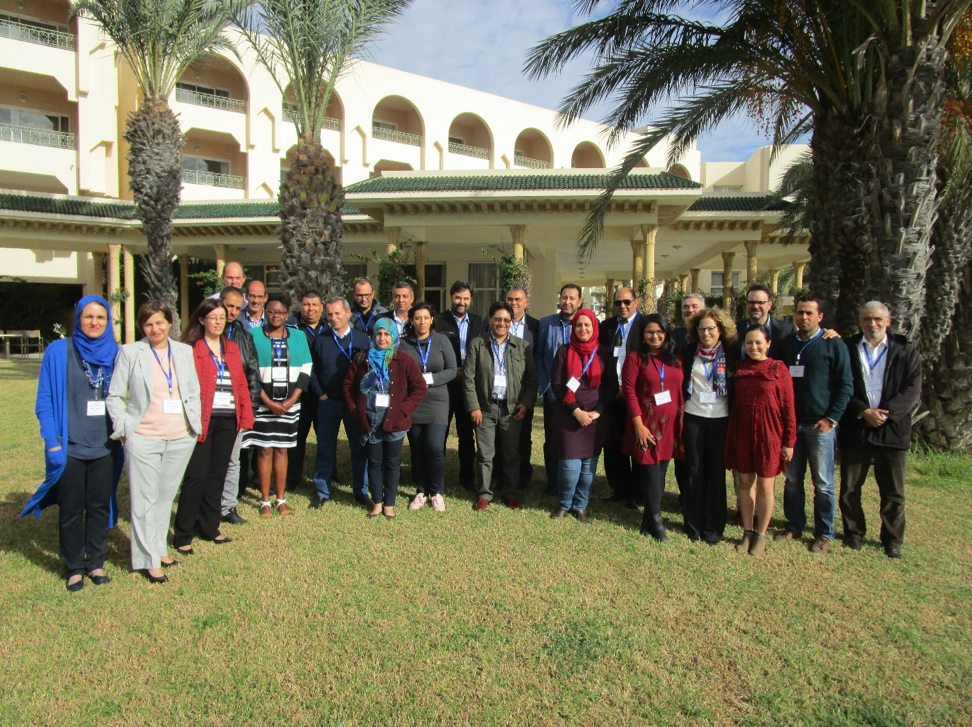Scaling to new heights in agriculture
How to scale? This question frequently comes up as projects look to expand and replicate results. In order to sustain enduring impacts for projects after their lifetime, agricultural programs are turning to scaling strategies. These strategies look beyond the numbers that are reached within a project and include sustainability and transformation beyond the project context. Methods and tools exist that help anticipate realistic and responsible scaling pathways.
The Scaling team at the International Maize and Wheat Improvement Center (CIMMYT), led by Lennart Woltering, drives the initiative to incorporate scaling principles into existing and developing projects to maximize impact.
Maria Boa recently joined the team as Scaling Coordinator. Last year, Boa and Woltering participated in regional meetings on scaling in Morocco, Tunisia and Vietnam, which highlighted the need for better dissemination of information on how to approach scaling, in addition to its benefits.

According to Boa, one of the key messages highlighted throughout these events was that in order for scaling to take hold and be integrated into projects, “…there needs to be a shift in mindset to accept that change is complex and that most projects only address a fraction of the problem.” This is essential in using scaling to effectively support long-term results.
At a workshop in Tunisia organized by ICARDA, IFAD and CIMMYT in November 2018, many participants expressed interest in scaling strategy tools, but were puzzled on how to integrate them into their specific projects. Many determined that they were stuck developing scaling strategies in an outdated framework, or one that strictly focused on using technological innovations. One participant admitted that she was skeptical of scaling perspectives because many did not lie in her field of expertise.
The November 2018 CCAFS SEA Conference on Scaling in Vietnam provided a platform for the sharing and learning of experiences in the scaling world. Some of the key messages from the event included the importance of scaling agricultural innovations taking place in complex systems of agricultural transformation, and the necessity of joint cooperation from all involved stakeholders and their openness to taking on challenges as a way to support sustainable system change.
According to Boa, scaling is a process that heavily relies on strategic collaboration for lasting impact. “Projects often don’t take into account how they’re a part of a larger chain of potential change,” she says.
Already recognized as a sustainable leader within scaling, CIMMYT is looking to strengthen scaling efforts in order to foster a more enduring impact within CIMMYT projects and beyond.

Currently, the Scaling team at CIMMYT is conducting research on the “science of scaling” as it continues to function as a “help desk,” providing support integrating scaling principles in proposals and projects. Its primary role is to consider a project’s scaling needs and guide the development of an informed strategy to leverage efforts and resources. Boa hopes that by integrating responsible scaling approaches early on, projects can better balance the trade-offs associated with change.
Success in scaling is measured by a project’s enduring impact. However, stakeholders need more experience and capacity to see programs through to their end and be willing to monitor them beyond that lifespan. CIMMYT is developing and collecting the tools to support stakeholders with these specific capacities.
Developing a scaling strategy can also bring additional benefits: a discussion about scaling opens the door for raising awareness and fostering actions among different stakeholders towards system change and sustainable impact.




